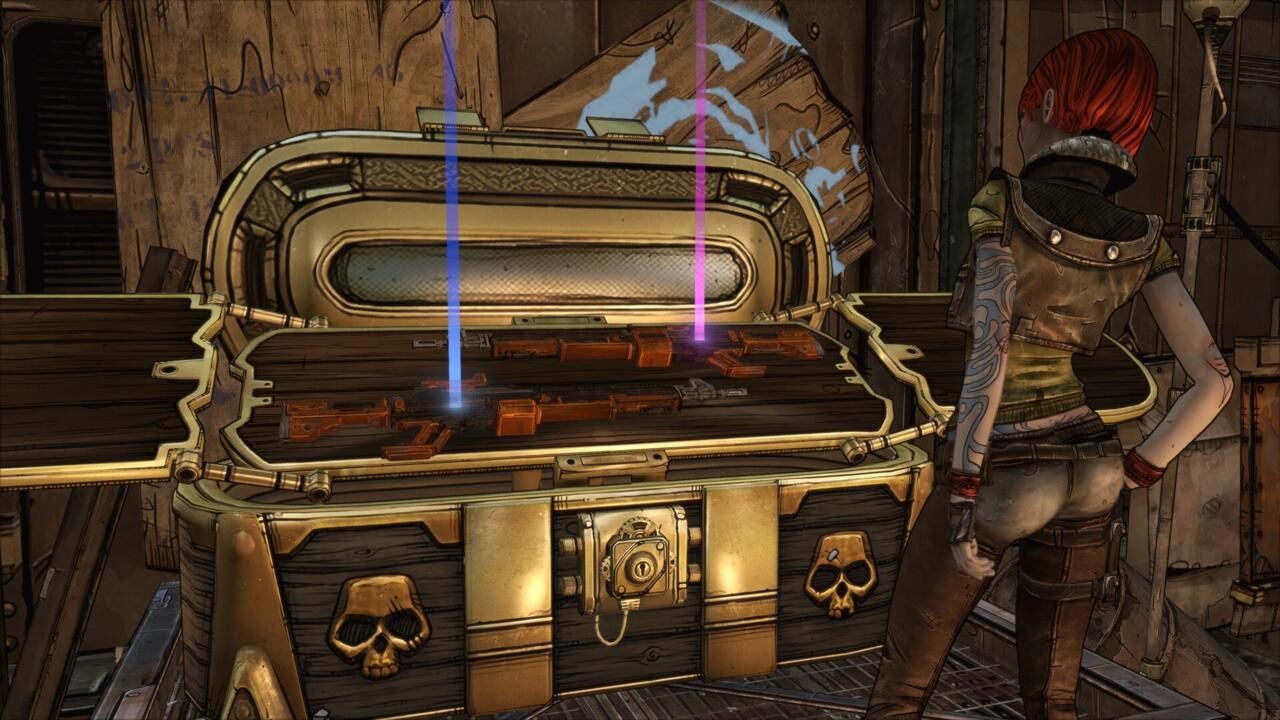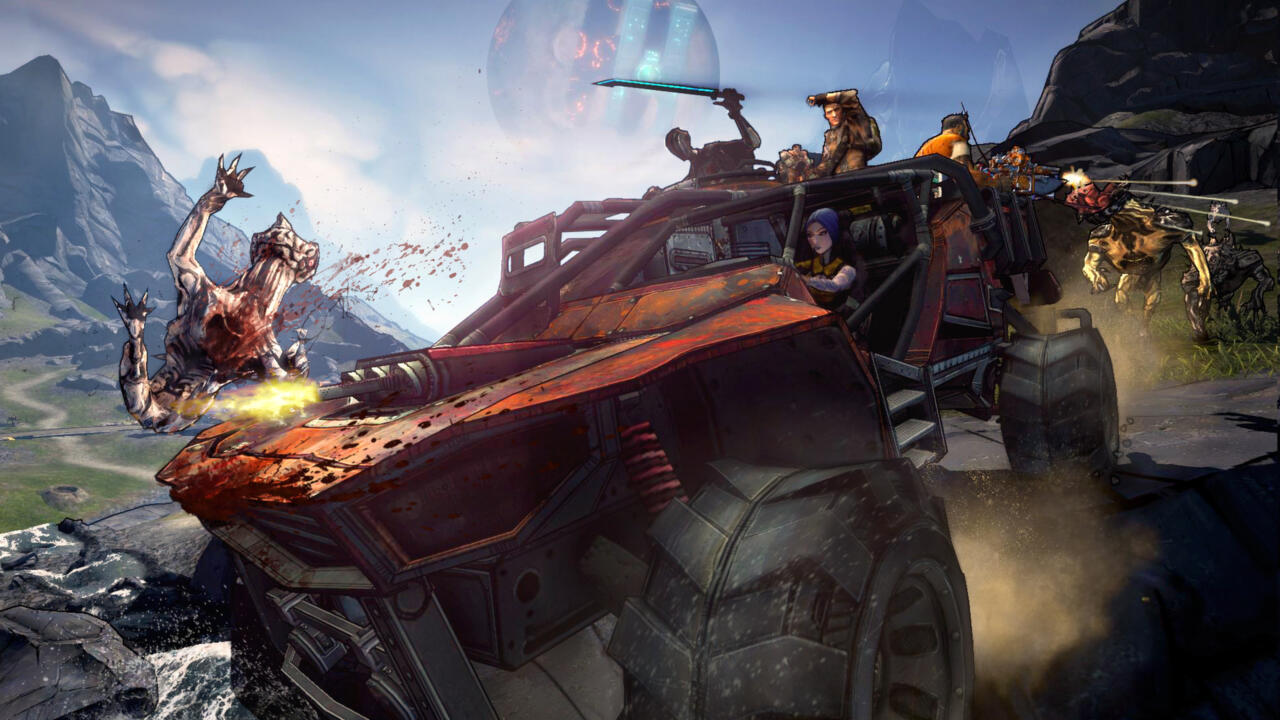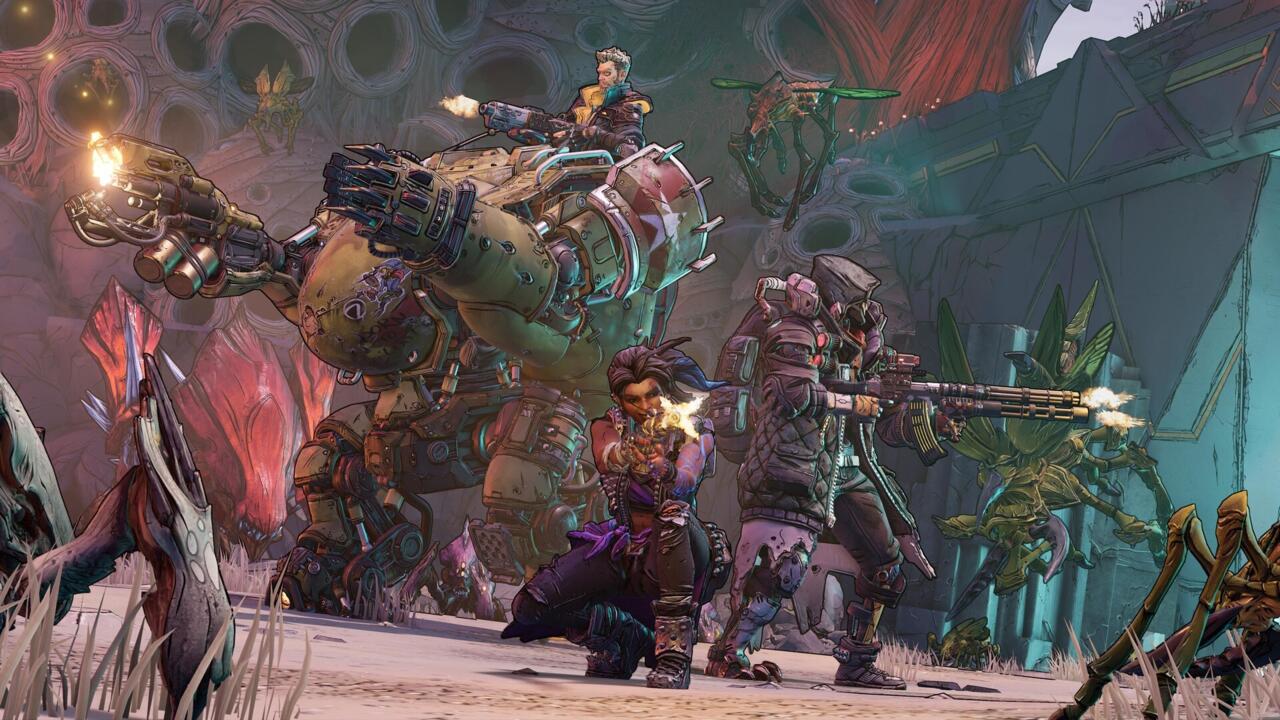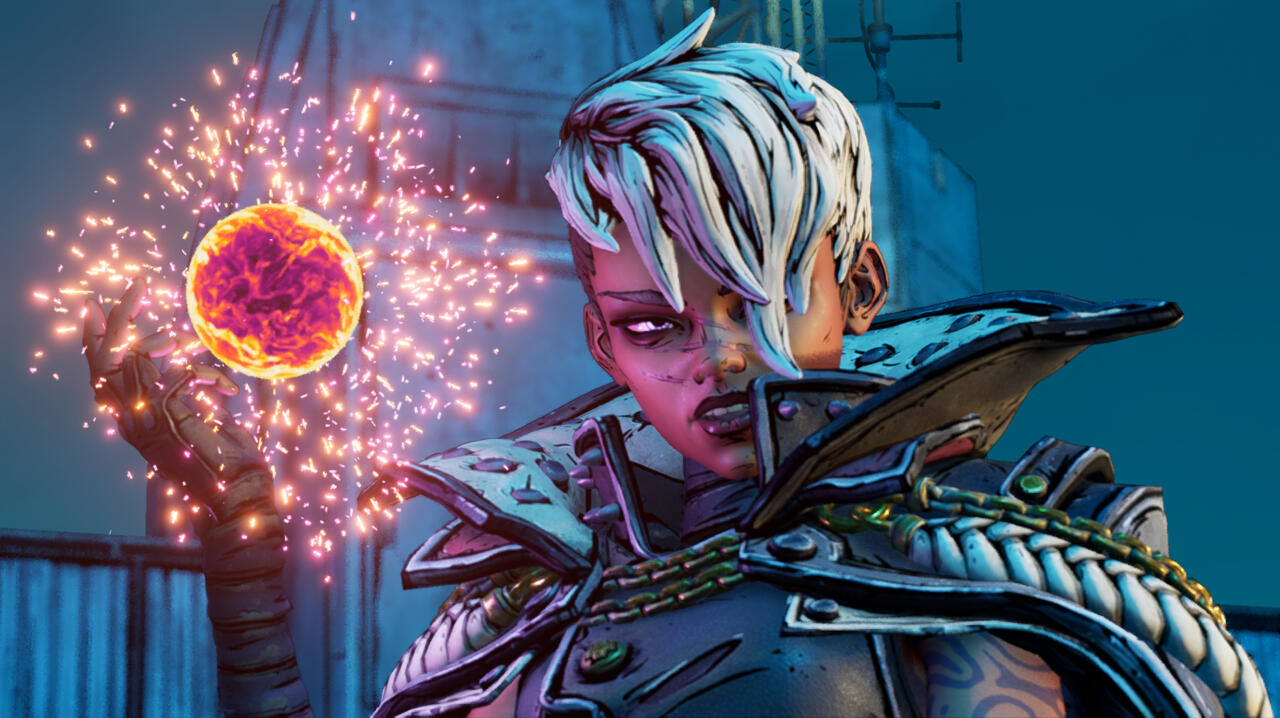The Borderlands franchise holds a peculiar place within the history of the gaming industry, kickstarting a genre that has gone on to become a different kind of beast. After all, though the concept of combining both RPG and first-person shooter mechanics was first seen in 2007's Hellgate: London, the loot-shooter genre owes its popularity to 2009's Borderlands. And yet, today, many of the most popular loot-shooters are also live-service games (like Destiny 2 and Warframe). Borderlands is not, having never adopted that format. It instead has multiple sequels--some of which diverge from the original game and don't feature any looting or shooting.
Like these other live-service game franchises, however, character-driven storytelling has been one of the main unifying pillars of Borderlands, which has been supported by a writer's room. "Gearbox is casually unique in the sense that we maintain a writer's room," Gearbox Entertainment associate director of narrative properties April Johnson told me. "So we don't just plunk you to work on a project and say, 'Okay, enjoy the two of you doing this--we have multiple things that we are working on, so we won't Voltron up as a full unit until later.'"
Having a constant writer's room is a strategy you usually see in story-driven live-service games where maintaining a narrative vision over multiple years--over a decade in the case of some games like Destiny--is important. It's not often seen in AAA franchises that feature several sequels and recruit a new set of writers from project to project. Gearbox Entertainment is not wholly unique in this strategy within the gaming industry, but it is a rare exception and the team points to this as one of the reasons for how the studio has managed to curate a specific narrative voice across all its projects.
"It's a huge commitment from Gearbox as an entity," Johnson said. "And [Gearbox Entertainment managing director of narrative properties] Lin Joyce and myself are the sort of impresarios of narrative here at Gearbox where it's so vital to have these creative spaces where you could feel safe to be like, 'Hey, I kind of got a little adventurous with this. What do we think?' And [having a place] where you can say like, 'Okay, what if we did this or what if we did this,' and having punch-up buddies and having a place to get rowdy in the best way--we're very proud of it, and we're deeply committed to a writer's room experience."
Formulating this creative narrative vision for the franchise was created post-Borderlands 2. "I joined the narrative team probably just a couple seconds after the narrative team was really formalized at Gearbox," Gearbox Entertainment writer Dante Silva told me. "It was kind of a bit of a Wild West in the era of Borderlands 1 and 2. And luckily we had some of the rootinest, tootinest cowboys handling the narrative, who kicked ass, took names, and made these amazing stories. But when we started formalizing that structure, it really helped us make a lot of the vaguer pillars of our narrative more concrete, more crystalline, and allowed us to have a longer view narratively. We also got to expand our team. So one of the fantastic things that's happened in the post-Borderlands 2 era is that we can take that wider view, we can have a broader top-down approach to things. We can have this really diverse team making a really amazing and rich cast that we can dive into at any point and feel supported and structured and clear and consistent throughout. It doesn't have to be just all in one person's brain in this seething storm."

Gearbox Entertainment points to those early days as part of the inspiration for how the team tackles storytelling in Borderlands now. "Initially, we spent a lot more time building the universe than worrying about the story, and the earliest attempts at storytelling and figuring out what that would be, it just didn't work," Gearbox Entertainment founder Randy Pitchford told me. "I remember, at one point, a couple of the guys went in the tank, and wrote a script, and it was written all over the place... I felt like a dick, but I had to just shoot it in the head, and, ultimately, I think the turning point was saying, 'Look, we were awesome at universe building, and that led to characters and themes, but the storytelling in Borderlands, the original game, is pretty simple.'"
"We now have, I feel, much better lenses through which to examine our characters," Silva said. "We can look much deeper, and in terms of the overarching narrative--especially with all our transmedia stuff--we can explore these stories much more clearly to a much more distant degree than we once could. Things had to be a lot more self-contained, I think, previously."
Johnson added: "And one of the things that kind of every writer, starting with Mikey Neumann, all the way through to Dante and Lin Joyce and Sam Winkler, that we've ever had has been pretty spectacular at writing characters and we write them so well and people fall so in love with them. We have to bring them back. So one of the things that we've been able to do--as the narrative department became more than just the lead writer and the creative director holed away in the closet and, instead, became this narrative writer's room--is have more voices and more people holding the container of the story as well as understand how to work with cross disciplines. For example, our mission designers and narrative [team] work so closely together that when the games are released, those things are so layered on top of each other that you cannot tell one from the other--the narrative is given to you through gameplay, it's given to you through the mission."
"That was really hard to do with the first game," Pitchford said. "In fact, it was so hard that we failed [at first], and the whole reason why there's a Marcus intro [in Borderlands 1] is a patch because before that existed, new players were like, 'What in the f**k is going on? What are the stakes? I don't understand anything,' and so we created that intro with Marcus literally at the last minute to put some context into the universe and the backdrop."

Still, the first Borderlands introduced many of the franchise's more successful storytelling staples, especially when it came to tying storytelling and gameplay as closely together as possible. Though roleplaying games had been utilizing these strategies for years--using hundreds of weapons, collectibles, and loot to personalize characters beyond the playable protagonist and provide insight into the lore of a world--this was not a popular practice in first-person shooters prior to Borderlands. "I was talking to [former Gearbox writer Mikey Neumann] the other day, and he reminded me that the first sort of mini-boss in Borderlands 1 is Nine-Toes, and when you kill him and you get his loot, it's a gun called The Clipper, and it's a pistol--the first one that has a blade on it," Pitchford said. "And then you're like, 'Oh, he's called Nine-Toes because he dropped his gun, and the blade chopped one of his toes off,' and the only way to come to that conclusion is by looting him, and looking at the loot, and reading the flavor text, and putting two and two together yourself, and there's a whole story there, and that's that integration of the world, and the loot, and the gameplay itself, and the characters, and their experience."
When first coming up with the pitch for Borderlands, Pitchford sought inspiration from 1987's NetHack, an open-source single-player roguelike entirely portrayed through text art. "That was where [Borderlands] started," he said. "Internally, just to make it simple, we'd say, 'Halo meets Diablo.' In the back of my mind, however, [Borderlands] was 'Wolfenstein meets NetHack.'"
In Pitchford's mind, NetHack was fun but lacked the storytelling chops of games like Diablo, which featured actual character models, cutscenes, and lore. But if you added those improvements made by Diablo and then included a compelling, skill-focused gameplay loop centered around first-person shooters, you had a winning formula.
"We benefited a lot from when we helped Bungie with Halo," Pitchford said. "We brought Halo to the PC, and we wrote the code that allowed Halo to be played on the internet for the first time, and we did a lot of content for it, too, but we used Bungie's engine and their system, and we learned a lot, and benefited from their approach to data-driven [design]. It's kind of poetic justice that Bungie, in turn, benefited so much from Borderlands as they made Destiny, and yeah, that's what it's all about--we're all just building on the shoulders of the giants who were before us... I think there's room for more, and I'm, frankly, surprised that more folks haven't been inspired by Borderlands more directly, but it's hard. I think a couple of folks have tried, and it's not easy. You can't just see that something's worked, and try to copy it. That's why Bungie is so successful, because they're game makers, and they understand game design, so they can take some things, but also put their own spin on it, and make something new and remix it again, all while understanding fundamentally why it works for the psychology of the gamer. And that's really what the difference is, those that are just copying, and trying to do their best, versus those that are actually bringing something cool to the world."

But at the center of it all, the Borderlands games had to keep character-driven storytelling and the player's narrative experience as the focus. The team believed that this principle would unify the Borderlands franchise, keeping players invested in the series even when it broached genres beyond the looter-shooter and mediums beyond video games. That's where Tales from the Borderlands and, subsequently, New Tales from the Borderlands come in. In Pitchford's eyes, if Gearbox Entertainment had succeeded in making character-driven storytelling the main draw of Borderlands, then more stories in that franchise that didn't feature first-person shooting or hundreds of items to loot should still sell and be well-received.
"[Tales from the Borderlands] feels like a totally authentic Borderlands game, because what it did is lean into the characters and the universe and the storytelling, and, in fact, that's why I was excited for it," Pitchford said. "We were talking to the Telltale guys, and we did a collaboration with Poker Night--there are Borderlands characters in Poker Night--and I wanted to expand Borderlands into transmedia, and so, to me, Tales from the Borderlands was a test case, and if it worked, it would prove that the universe and characters are rich enough to carry an audience's attention, and entertain, and if that's true, then I could make a movie."
He added: "[Tales from the Borderlands] was a proof point that the value of Borderlands wasn't only because of the gameplay, the game design, the shooting and looting; it was also because of the characters, and the universe, and that was a really, really important proof point for me because the universe and characters had to be important--if the universe and characters had no meaning, we could be fine with just more NetHack. We don't need the characters and graphics backdrop. We could be fine just with the equal sign being the walls and the pound sign being the door and the ampersand sign being the hero, and it's fun because the game design is the only thing of value. But we know that's not true. We know that there's value in more than just the game design. We know that the story and universe and characters have value, too. So to prove that it's enough to carry a product was key, and with that proof point in hand, I had all the confidence in the world to start working on Borderlands as a transmedia property."

To that end, Gearbox understands that the Borderlands franchise will be 14 years old as of this October. That's a lot of story to catch up on if you want to experience all of it ahead of the release of the movie and future Borderlands projects that are in store. So, on September 1, Gearbox is releasing Borderlands Collection: Pandora's Box. The collection includes the whole Borderlands gaming experience up to this point--Borderlands, Borderlands 2, Borderlands: The Pre-Sequel, Tales from the Borderlands, Borderlands 3, and New Tales from the Borderlands--alongside all of their post-launch expansions.
"It's really great to be able to revisit and experience those things again,“ Pitchford said. “I think this is a perfect time to do it because we've got this moment here when there's all this great stuff coming. ...Before we distract you with a whole bunch of crazy new shit that's happening, before this movie comes out, and before the next wave of our franchise plan will start to manifest, you can get all of [Borderlands]. You can experience all of this stuff in the best possible way, better than the way we first experienced it when it first came out and I think that's beautiful, and I'm so grateful that our publishing partner, 2K, believes in that, and supports that thesis, and I'm so stoked that the team at Gearbox has so much love for what we've done."
Borderlands Collection: Pandora's Box will launch for Xbox Series X|S, Xbox One, PS5, PS4, and PC. Following that, Borderlands 3 Ultimate Edition is coming to Switch on October 6.

